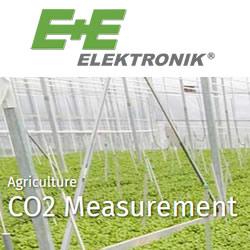For agricultural and biological engineers this new industrial era vindicates what we have been pursuing all along, and it shines a spotlight on our role in addressing one of humanity’s grand challenges: designing resilient and sustainable food systems for the planet.
The Fourth Industrial Revolution
Joel Cuello | The University of Arizona, Tucson
Reprinted from Resource magazine with permission from ASABE:
Suddenly, in the latter half of the second decade of the 21st century, the world has awakened to a new industrial era. Charles Schwab, Founder and Executive Chairman of the World Economic Forum, has pointed to a Fourth Industrial Revolution as the world’s next major industrial era.
The First Industrial Revolution harnessed water and steam power to mechanize production, the Second used electric power to create mass production, and the Third exploited electronics and IT to automate production. The Fourth Industrial Revolution combines advances in robotics, artificial intelligence, biotechnology, nanotechnology, quantum computing, the Industrial Internet of Things (IIoT), additive manufacturing/3D printing, and fully autonomous vehicles, among others, in the design of breakthrough engineered systems at the intersections of the physical, the digital, and the biological.
For agricultural and biological engineers—who have been innovating at these intersections for the last four decades—this new industrial era vindicates what we have been pursuing all along, and it shines a spotlight on our role in addressing one of humanity’s grand challenges: designing resilient and sustainable food systems for the planet. Because ag and bio engineers have a head start on the Fourth Industrial Revolution, what types of engineers can we become in this new era? There are at least three: innovationeers, sustainavisioneers, and entrepreuneers.
.png)
Innovationeers
By proactively selecting technologies and tools from multiple disciplines, industry sectors, and professions, ag and bio engineers are adept at designing data-driven biophysical systems that offer effective, creative solutions. This is true in all areas of ag and bio engineering—from water and the natural environment to bioprocessing, machine design, electronics, biotechnology, and controlled environment agriculture. Vertical farming, a spinoff of NASA’s Controlled Ecological Life Support System, is a notable example of the data-driven, biophysical systems that are emerging worldwide. Ag and bio engineers got there first, and we continue to make significant contributions.
Sustainavisioneers
Ag and bio engineers have also been pioneers in the design of regenerative or closed-loop systems in the service of a circular economy. In vertical farming, once again, we design innovative strategies to optimize the efficient use of essential inputs, such as water, energy, nutrients, space, and labor. Cuello’s Law, a projected goal in the vertical farming industry, states that crop productivity with respect to resource use in a tech-dense indoor farm should double every four to five years. This means that tech-dense vertical farms should achieve a doubling of crop productivity per liter of water, per kilogram of nutrients, per kilowatt of energy, per square meter of land area, etc., at least every half decade in the next two decades. Vertical farming enterprises appear to be making significant progress toward this goal. For instance, Plenty, an indoor farming company based near San Francisco, claims that it can produce as much as 350 times more food per acre of land, while using only one percent as much water, resulting in vastly more efficient food production and resource use compared to conventional agriculture.
Entrepreuneers
With 2018 posting another record year for investments in ag tech, with more than $1.5 billion invested in over 160 deals, compared to less than $200 million invested in 31 deals back in 2007, ag tech has clearly grown from a niche of the capital investment world to its own investment sector. Disruptions in the retail food chain, changes in agricultural land use, increased focus on sustainability, and changes in consumer preferences have all contributed to the increase in ag tech investment. This creates unprecedented opportunities for companies that apply the broad expertise of ag and bio engineers. For instance, in July 2017, Plenty secured an investment package totaling $200 million. In July 2018, another U.S. vertical farming company, Crop One Holdings, announced a joint venture with Emirates Flight Catering to build a $40 million, 130,000 square foot facility in Dubai that will provide fresh produce for the roughly 225,000 meals that the catering company supplies to Emirates airline. Meanwhile, Boston-based Indigo Ag has secured the largest investment in ag tech so far, in the amount of $203 million. This maturation of the ag tech investment sector will help expand the entrepreneurial cohort of ag and bio engineers.
.jpg) Agricultural and biological engineers certainly contributed significantly to transforming America and the world in the 20th century. In the 21st century, as the nascent Fourth Industrial Revolution locates the center of gravity of transformational and value-creating engineered systems at the interfaces of the physical, the digital, and the biological—agricultural and biological engineers have become even more well-positioned to contribute meaningfully in the collaborative co-creation of a more data-intelligent, resilient, and sustainable world.
Agricultural and biological engineers certainly contributed significantly to transforming America and the world in the 20th century. In the 21st century, as the nascent Fourth Industrial Revolution locates the center of gravity of transformational and value-creating engineered systems at the interfaces of the physical, the digital, and the biological—agricultural and biological engineers have become even more well-positioned to contribute meaningfully in the collaborative co-creation of a more data-intelligent, resilient, and sustainable world.
The content & opinions in this article are the author’s and do not necessarily represent the views of AgriTechTomorrow
Comments (0)
This post does not have any comments. Be the first to leave a comment below.
Featured Product


